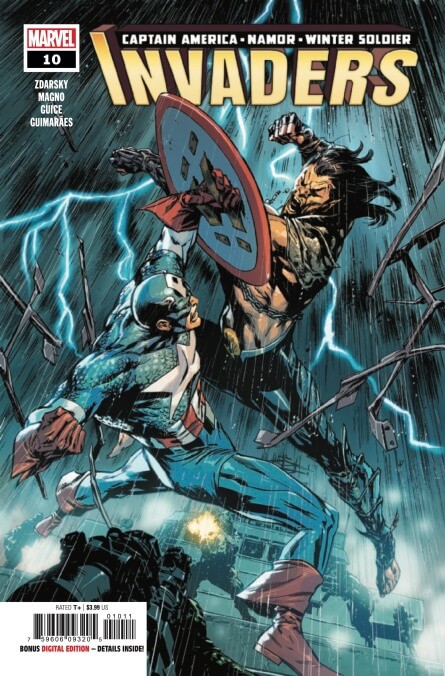Captain America and Winter Soldier infiltrate Atlantis in this Invaders #10 exclusive

Marvel has been spending a lot of time in the past with its 80th anniversary celebration, and the current Invaders series mines rich dramatic material from the relationships between characters who have been fighting to protect the Marvel Universe since the beginning. Written by Chip Zdarsky with art by Carlos Magno, Butch Guice, colorist Alex Guimarães, and letterer Travis Lanham, this title explores the profound, lasting trauma of war through Namor’s most recent descent into villainy.
In an attempt to psychically alleviate the pain of losing a close friend on the battlefield, Charles Xavier accidentally turned all of Namor’s grief and righteous anger into its own entity, a mental parasite that compels him to take his fight against the surface world to new extremes. Namor’s gone so far as to resort to bio-terrorism, unleashing a compound that turns humans into water-breathing Atlanteans, which he views as a benevolent solution to the rising tides of the climate crisis. This compounds opens up a whole can of worms, essentially turning humans into water-breathing mutants. Given the major changes for mutants in the Marvel Universe happening in House Of X and Powers Of X, Invaders sets up some very interesting stories to come, and it’s the first title outside of the X-line to acknowledge the new Krakoa mutant nation state.
In order to stop Namor, Captain America and Winter Soldier expose themselves to the compound so that they can infiltrate Atlantis. The parallel storytelling of this series gives it a lot of depth as the team contrasts moments of the Invaders in World War II with their current high-stakes situation, and this exclusive preview of next week’s Invaders #10 highlights this narrative structure as it shows Captain America visiting Atlantis in two very different scenarios. These pages highlight how well the artists differentiate between these two periods, with Guice and Guimarães bringing extra grit to the flashbacks to show what a different world it was for heroes back then. Magno’s artwork for the present-day sequences has much cleaner and more intricate detail, reinforcing how the now has more definition than memories from decades past. That intersection of past and present drives this series, introducing plot points that create many opportunities for the future.
